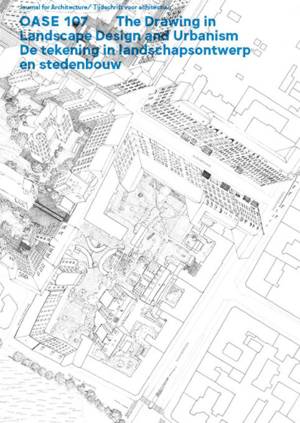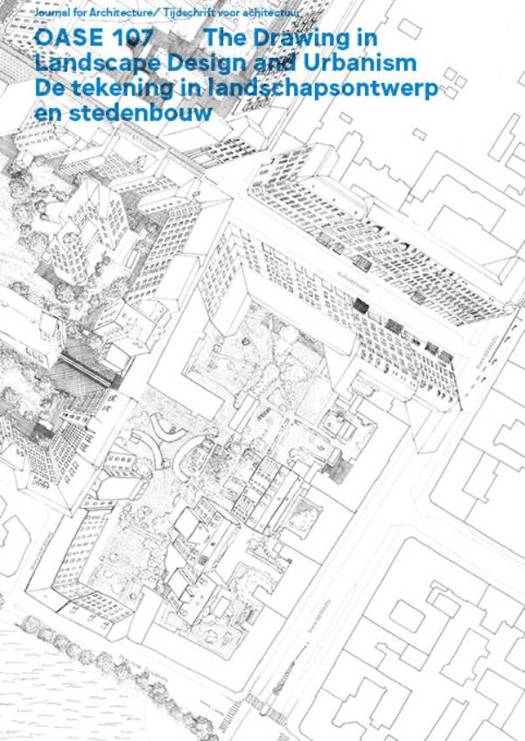
- Retrait gratuit dans votre magasin Club
- 7.000.000 titres dans notre catalogue
- Payer en toute sécurité
- Toujours un magasin près de chez vous
- Retrait gratuit dans votre magasin Club
- 7.000.0000 titres dans notre catalogue
- Payer en toute sécurité
- Toujours un magasin près de chez vous
De tekening in landschapsontwerp en stedenbouw/The Drawing in Landscape Design and Urbanism EBOOK
14,95 €
+ 14 points
Description
For Dutch see below
- English -
In recent decades, the drawing practices in landscape design and urbanism have seen a number of transformations. Current developments in theory and practice have rendered the distinction between the two more diffuse. Both disciplines are no longer regarded as architecture - or gardening - 'on a larger scale', primarily anchored in questions of housing, land development or embellishment. Today ecology, energy transition or 'metabolic' issues are much more present, which leads to new forms of drawing. Leaving an object-oriented thinking behind, both disciplines seem to be convinced of the importance of the process and the impact of the factor of time. Space has become understood as an intersection - a 'coagulation' - of a multiplicity of flows and processes.
For designers it is an essential question how all these flows and processes come together, materialize, and become visible, and how their 'spatialization' in drawings is represented in analysis and design. The design and the drawing seem to be torn between a process-oriented agenda and a spatial intervention whose success depends on disciplinary expectations of care, materiality and intrinsic aesthetic qualities. Sustainable design not only presupposes a bold solution to the problem, but must also be beautiful, empathic and affective. What role does the drawing play - from cartography to sketch? Which traditions offer starting points? What innovations are needed?
- Dutch -
In de afgelopen decennia heeft het tekenen in de context van landschapsontwerp en stedenbouw een aantal transformaties ondergaan. Recente ontwikkelingen in de theorie en de praktijk hebben het onderscheid tussen beiden doen vervagen. De twee disciplines worden niet langer beschouwd als bouwen - of tuinieren - 'op grotere schaal', vooral in de context van kwesties als woningbouw, landinrichting en uiterlijk vertoon. Tegenwoordig spelen de ecologie en de energietransitie of 'metabole' vraagstukken een veel nadrukkelijkere rol, wat resulteert in nieuwe manieren van tekenen. Beide disciplines laten het object-georiënteerde denken achter zich en lijken overtuigd te zijn van het belang van het proces en de impact van de factor tijd. De ruimte wordt opgevat als een kruispunt - een 'gestold punt' - in een veelvoud aan stromen en processen.
Voor ontwerpers is de vraag, hoe al deze stromen en processen samenkomen, materialiseren en zichtbaar worden, en hoe hun 'verruimtelijking' in tekeningen is vertegenwoordigd in analyses en ontwerpen, van het grootste belang. Het ontwerp en de tekening lijken te worden verscheurd tussen een procesgerichte agenda en een ruimtelijke ingrijpen dat voor zijn succes afhankelijk is van disciplinaire verwachtingen aangaande zorg, materialiteit en intrinsieke esthetische kwaliteiten. Duurzaam ontwerpen veronderstelt niet alleen gewaagde oplossingen voor problemen; deze moeten ook mooi, empathisch en affectief zijn. Wat is de rol de tekening - van cartografie tot schets? Welke tradities bieden aanknopingspunten? Welke innovaties zijn nodig?
- English -
In recent decades, the drawing practices in landscape design and urbanism have seen a number of transformations. Current developments in theory and practice have rendered the distinction between the two more diffuse. Both disciplines are no longer regarded as architecture - or gardening - 'on a larger scale', primarily anchored in questions of housing, land development or embellishment. Today ecology, energy transition or 'metabolic' issues are much more present, which leads to new forms of drawing. Leaving an object-oriented thinking behind, both disciplines seem to be convinced of the importance of the process and the impact of the factor of time. Space has become understood as an intersection - a 'coagulation' - of a multiplicity of flows and processes.
For designers it is an essential question how all these flows and processes come together, materialize, and become visible, and how their 'spatialization' in drawings is represented in analysis and design. The design and the drawing seem to be torn between a process-oriented agenda and a spatial intervention whose success depends on disciplinary expectations of care, materiality and intrinsic aesthetic qualities. Sustainable design not only presupposes a bold solution to the problem, but must also be beautiful, empathic and affective. What role does the drawing play - from cartography to sketch? Which traditions offer starting points? What innovations are needed?
- Dutch -
In de afgelopen decennia heeft het tekenen in de context van landschapsontwerp en stedenbouw een aantal transformaties ondergaan. Recente ontwikkelingen in de theorie en de praktijk hebben het onderscheid tussen beiden doen vervagen. De twee disciplines worden niet langer beschouwd als bouwen - of tuinieren - 'op grotere schaal', vooral in de context van kwesties als woningbouw, landinrichting en uiterlijk vertoon. Tegenwoordig spelen de ecologie en de energietransitie of 'metabole' vraagstukken een veel nadrukkelijkere rol, wat resulteert in nieuwe manieren van tekenen. Beide disciplines laten het object-georiënteerde denken achter zich en lijken overtuigd te zijn van het belang van het proces en de impact van de factor tijd. De ruimte wordt opgevat als een kruispunt - een 'gestold punt' - in een veelvoud aan stromen en processen.
Voor ontwerpers is de vraag, hoe al deze stromen en processen samenkomen, materialiseren en zichtbaar worden, en hoe hun 'verruimtelijking' in tekeningen is vertegenwoordigd in analyses en ontwerpen, van het grootste belang. Het ontwerp en de tekening lijken te worden verscheurd tussen een procesgerichte agenda en een ruimtelijke ingrijpen dat voor zijn succes afhankelijk is van disciplinaire verwachtingen aangaande zorg, materialiteit en intrinsieke esthetische kwaliteiten. Duurzaam ontwerpen veronderstelt niet alleen gewaagde oplossingen voor problemen; deze moeten ook mooi, empathisch en affectief zijn. Wat is de rol de tekening - van cartografie tot schets? Welke tradities bieden aanknopingspunten? Welke innovaties zijn nodig?
Spécifications
Parties prenantes
- Editeur:
Contenu
- Nombre de pages :
- 128
- Langue:
- Multilingue
- Collection :
Caractéristiques
- EAN:
- 9789462085923
- Date de parution :
- 09-12-20
- Format:
- Ebook
- Protection digitale:
- Digital watermarking
- Format numérique:

Les avis
Nous publions uniquement les avis qui respectent les conditions requises. Consultez nos conditions pour les avis.





